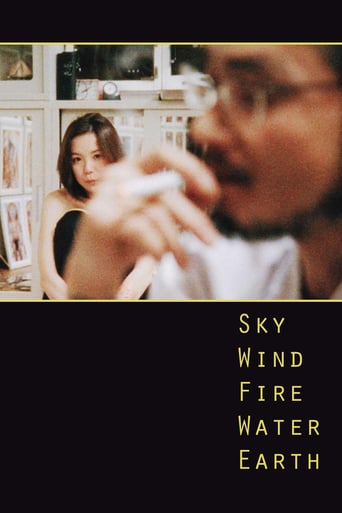chaos-rampant
The worst enemy of meditation, at least in the summer months, is the mosquito. The heat, torpor, restlessness, aching limbs, it all pales to that moment when you first hear the tiny, dreaded buzz. It's a weird thing that you come to know, like it or not. The buzz comes and goes in intervals, as if teasing, dancing. You can never seem to feel it sit on you. When the itch sets in, the adroit mosquito has already left that spot. It becomes one of the great teachers. You can plainly observe as you go from concentrated stillness to suddenly a heap of conflicting thoughts, that the tiniest tingle can be a source of consciousness. More deeply, it's a chance to observe the aerodynamics of mind in its flight; perception of the mosquito's very sound produces movement in mind (and that movement is narrative and self). In Buddhist terms, there is no self outside this thought wondering about what to do with the mosquito.In the films I watch, I distinguish between two types, those that make use of this structured perception and those that don't. I am drawn to the first, those that examine the immediate objects of awareness, the mosquito stings that produce consciousness.So, I've only recently began my cinematic relationship with this woman and I'm glad to see it continue here. She seems, when on a good day at least, like one of the most promising minds. Here she gives us a small, intimate portrait of her coming to terms with who she is, filmed by hand in 16mm around her house it captures something akin to visual memory. Apparently a continuation of a previous work about her father, here she explores her relationship with her lovely grandmother and her art.Unhappiness, family rejection, perhaps a premature artistic success at Cannes; these are the stings that produce what visual consciousness we see. They are personal to her but could be anything, white on canvas.It's all reminiscent of Marker's two works in Japan, Koymiko and Soleil, where basically he wanders with a camera letting images sting a stream of consciousness out of him.As in Marker, it'ss the visual movement they create that matters, self taking form before our eyes as a stream of narration. Of course it has not just sprung from innermost self, it never does. But she seems eager to surround the self that nourishes and whispers the thought as it rises in mind.The film is in the form of visual whispers, or small brushstrokes on water, or stanzas from a haiku stolen by the wind. It is not polished, nor strives for artistic perfection or timelessness. Cloudy skies, transient bedroom, the grandmother picking peas, she captures them with a grace that is life, boring wonderful life.In these and in between these, her ruminating self arises. There is some sadness and despair, with some affectation of preciousness. Her ease of sharing such personal details for the world to know strikes me as too overt, as though I am treading where I'm not sure I should.But overall, it is a marvellous poem. The one bit that feels out of place is her exchange with the tattoo artist—obviously scripted that pitches the metaphor of dwelling on memory as permanent ink on your soul.
jaakkochan
The movie was very well made, in both chronological and artistic means. Kawase shoots the movie with her passion and beautiful essence, but the occasional personal pathos doesn't feel heavy at all. Instead it feels light and touching. Her framing and camera moving is so unique. Her films have so strong and powerful emotion. Understanding the inner feelings of adopted person, this movie is deeply touching and honest. How hard it must have been to create such self-portrait for Kawase. You could feel the pain of the director herself. Despite very honest description, all characters are portrayed in honest and beautiful meaning. If someone would sometimes make movie about me, I would want it to be Naomi Kawase. Grandmothers are afteral, the best in this world.
